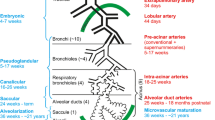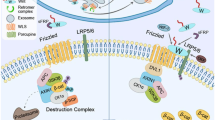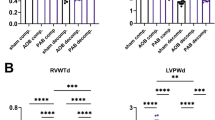Abstract
Using various microscopical techniques we studied the development of the atrioventricular valves in human hearts between 5 and 19 weeks of development. Within the atrioventricular cushions two different layers could be recognized that remained present in all ages studied. The atrial layer, being present at the side of the atrioventricular orifice, was positive for laminin while the ventricular layer, that was connected to the myocardium, was positive for fibronectin and collagen III. Fate-mapping of these two layers, morphometrics, and scanning electron microscopy, supplemented with in vivo labeling of cushion tissue in chicken hearts have lead to new insights in the process of valve development. The cushions became freely movable prevalvular leaflets by delamination of ventricular myocardium underneath the cushion tissue. This myocardium gradually retracted towards annulus and papillary muscles and finally disappeared, resulting in fibrous, non-myocardial valves. The atrial layer of the cushions remained present as a jelly-like surface on the valve leaflets while the ventricular layer of the cushions became the compact fibrous tissue of the leaflets and the chords. Chordal development was first visible at 10 weeks of development when gaps were formed in the ventricular layer of the cushions on top of the papillary muscles. These gaps enlarged into the interchordal spaces while the cushion tissue in between the gaps lengthened to form the chords. We conclude that the leaflets as well as the chords of the atrioventricular valves are derived from atrioventricular cushion tissue. Myocardium is only important for loosening of the leaflets while keeping connection with the developing papillary muscles. Errors in delamination or retraction of myocardium or remodeling of cushion tissue into chords form the basis for various congenital valve anomalies.
Similar content being viewed by others
Author information
Authors and Affiliations
Additional information
Accepted: 20 April 1998
Rights and permissions
About this article
Cite this article
Oosthoek, P., Wenink, A., Vrolijk, B. et al. Development of the atrioventricular valve tension apparatus in the human heart. Anat Embryol 198, 317–329 (1998). https://doi.org/10.1007/s004290050187
Issue Date:
DOI: https://doi.org/10.1007/s004290050187




